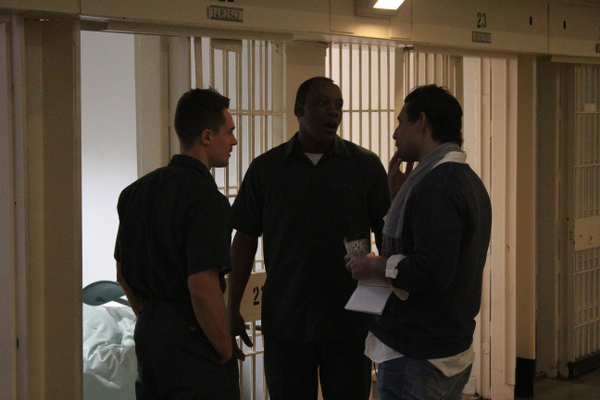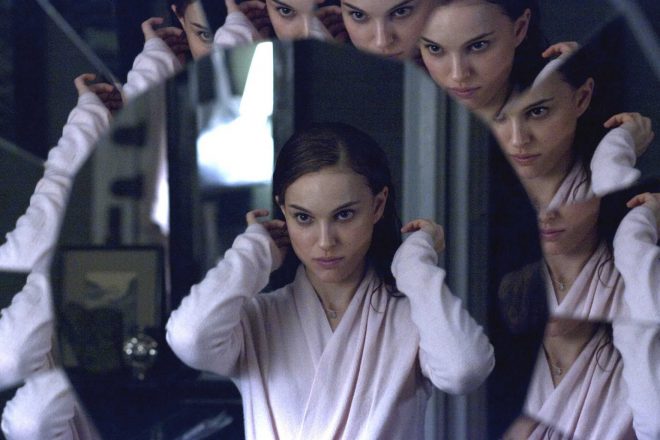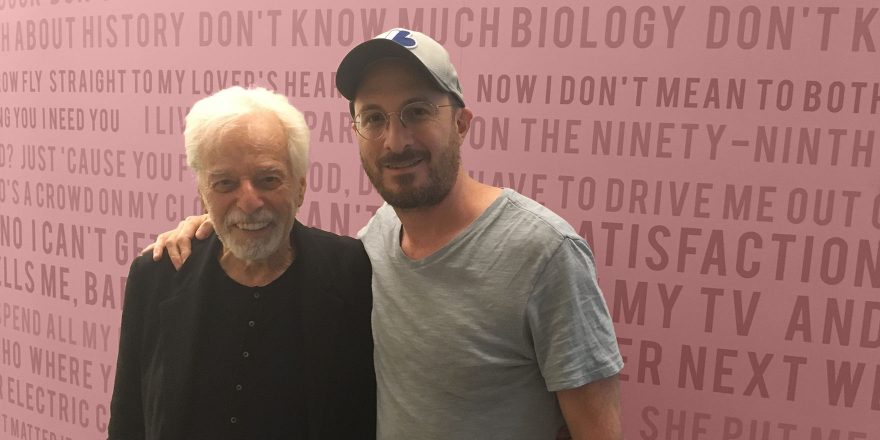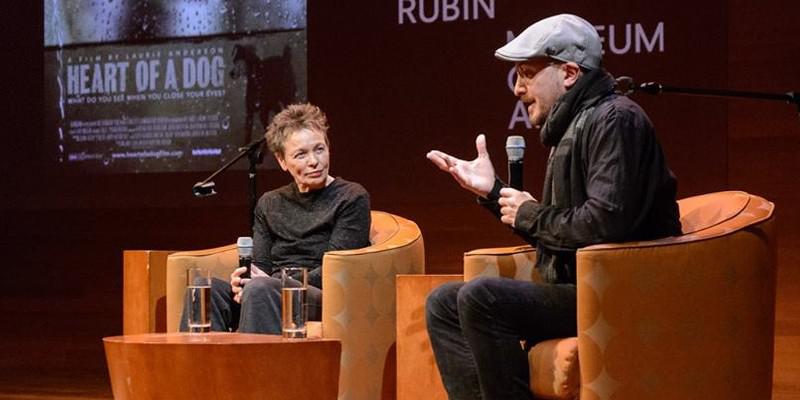It started with a cold email, then a phone conversation, followed by a trial assignment, which turned into an in-person meeting, resulting in an unpaid internship, which, after months of sweat and a modicum of serendipity, finally gave rise to the job I had been coveting: I was an assistant. Not just any assistant … an assistant to a film director! And not just any film director. My favorite film director: Darren Aronofsky. All told, I worked for Darren for two years, including on the film Black Swan.
With my debut directorial feature scheduled for release this week, I guess I’m feeling nostalgic. Working on Black Swan taught me so much about the artistry of filmmaking, supplying me with lessons that are now deeply ingrained within my own process. One quality of Black Swan that I am continuously drawn to and inspired by is its texture. From the guileful narrative and intricate dance sequences, to Nina’s (Natalie Portman) mauled feet and skin rash, to the sound design and film grain, moviegoers experience a world that is almost tactile. Here is one of my biggest creative takeaways: “The Corps.”
While movies typically cast extras to fill the background of a scene with people, in the ballet, the group of dancers occupying the background is known as the corps de ballet. With its countless dance scenes, Black Swan required its own corps. In fact, one of the first tasks Darren assigned to me on the project was traveling with Benjamin Millepied, the film’s choreographer, to different ballet companies to meet with interested dancers. By the time we started shooting, we had a full-on corps de ballet comprised of 20-30 professional dancers (who were also cast as extras/background players).
I remember looking around the set on day one and, between this newly formed corp, the ex-ballet dancers serving as advisors, trainers, and choreographers, plus Natalie Portman herself (who danced almost everything seen in the movie), the film crew was far outnumbered by dancers. This ratio represented a commitment to authenticity that texturized the world of the film with the world of the ballet. With so many dancers present, the specificity of their true-to-life rituals, techniques and insights seeped into every frame of the film organically. Shooting “B-roll” was closer to a documentary than a contrivance.
In another similar example, after a long day of shooting dance scenes, Natalie suffered a minor muscle pull and a physical therapist specializing in ballet was called in to help. The next day, a scene was added to the schedule: Nina in a physical therapy session (with her actual therapist from the day before). It turned out to be a beautiful interstitial scene, the texture of Natalie’s pain and fatigued body are palpable. For reality and story to merge like this requires the conditions for such a marriage be set in advance, as they were on Black Swan.
Therefore, I resolved to establish a similar set of conditions for my own film, Heartlock.
—-//—-
Heartlock is a rogue love story centered on a female correctional officer whose life is turned upside down by the fleeting affections of a male convict, whose charm is only as genuine as his desire to be free.
The script was inspired in part by a specialized form of prison manipulation called “ducking” or “downing a duck,” which is jailhouse slang for a gradual process in which inmates manipulate and betray unsuspecting correctional officers (C.O.s). An inmate selects a vulnerable officer and, over time — with the help of furtive observation, such as lip-reading — collects information on their lives and develops a personal rapport with the officer. Once the C.O. has let their guard down, the inmate draws on this personal relationship to extort the C.O. The closer this “friendship,” the more power the inmate has over their victim, demanding preferential treatment and dirty deeds… it’s often how drugs slip into prison, and how prisoners attempt to slip out.
Heartlock shines a spotlight on this true-to-life phenomena while exploring the necessity of sacrifice in all loving relationships.
So often fictionalized depictions of prison are reductive, populated with characters who are defined solely by their most primitive instincts. Either the inmate is the ruthless beast and the C.O. is the noble caretaker, or the C.O. is the sadist and the inmate is the hapless victim at the whim of his keeper.
In our attempt to rise above these stereotypes and familiar tropes, my co-writer and I spent a year researching and writing the screenplay for Heartlock. To collect first-hand knowledge about the prison experience, we spent hundreds of hours interviewing dozens of men and women with experiences as both inmates and C.O.s.
One such example was an ex-inmate with a remarkable photographic memory who spent five years at Sing Sing and was able to recount every detail of his incarceration down to the pattern of chipped paint on the ceiling of his very first cell. Another person we interviewed served as a C.O. at New York City’s notorious Rikers Island before she was ducked by a gang leader. Her illicit relationship with the inmate led not only to her dismissal but to her name being plastered across the pages of the New York Post. These two interviewees become such invaluable sources of information that I asked them to join the project as creative consultants so that they could work directly with my cast and crew to ensure Heartlock’s verisimilitude.
This commitment to reality continued beyond the completion of the script, guiding the growing Heartlock team as we prepared to shoot.

After an exhaustive search, we found perhaps the most aesthetically striking prison location in the United States, a foreboding five-story section of the state prison of southern Michigan known as 7-Block. However, given that it is attached to an active, maximum-security facility, Michigan prison officials were adamant that no filming would occur there, citing a slew of security concerns. Feeling there was no acceptable alternative location, we dove head first into Michigan’s political machine, developing relationships with town counselors, museum curators, state congressmen, and a cavalcade of Department of Corrections bureaucrats. Finally, after five months of promulgating our vision of Heartlock, a new edict came down from the uppermost reaches of the Michigan state government: Heartlock would be allowed to shoot in 7-block!
Shooting in a real prison like this for days on end lends a level of reality that far exceeded my expectations. In fact, our ex-con consultant was so overwhelmed at being “back” in prison that he frequently had to step out for air (a reminder of his freedom).
In addition, we tried our best to cast as many ex-cons in featured and extra roles as possible. Several guys who had previously served time at the prisons we were shooting at, which made for some very emotional moments, as well as some fantastic improvisations – not to mention the most captivating storytelling during meals and breaks.
—-//—-
As Black Swan neared wrap, I remember looking around, just like on day one; however, something had changed. When a fellow crew member walked by whistling Tchaikovsky and I overheard others dropping ballet terms like “fouetté” with fluency, something dawned on me: just like on screen, a merging of worlds had occurred on set. Cast, crew and corps were now one.







